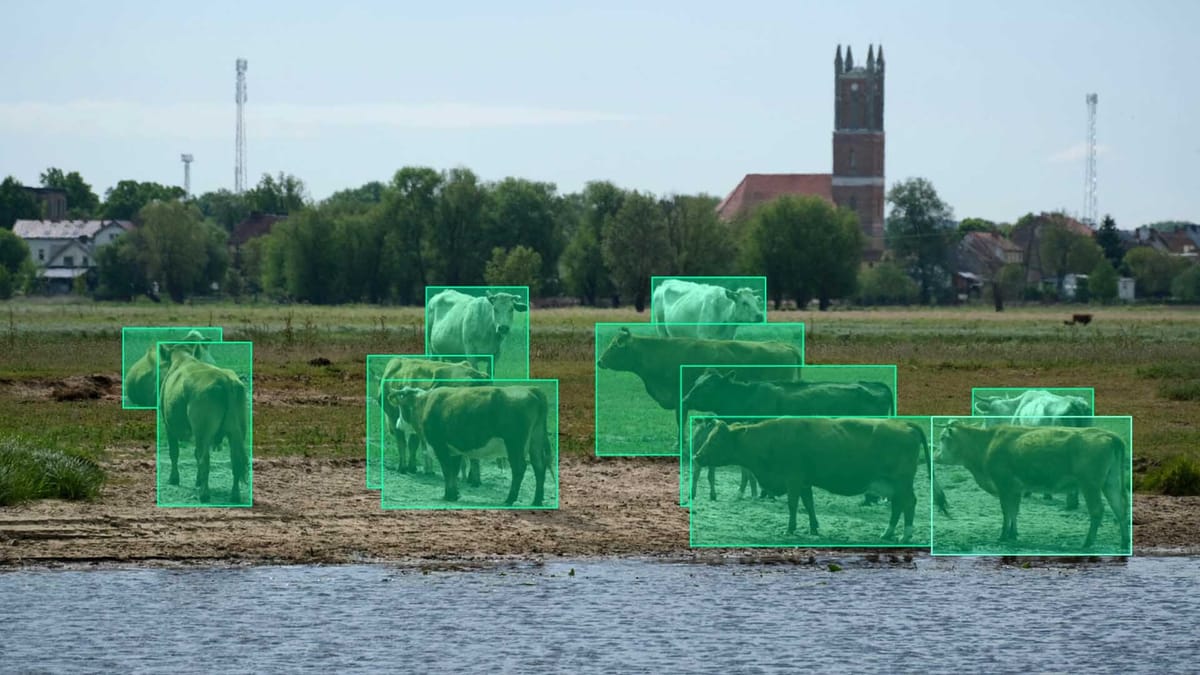Uncertainty sampling explained

Prioritizing complex examples focuses on areas where AI models have difficulty. Instead of randomly selecting data, data collection functions identify cases with high uncertainty through metrics such as entropy or margin. This helps teams reduce annotation overhead and improve productivity.
Quick Take
- Uncertainty sampling prioritizes data points where AI models lack confidence.
- Functions like entropy and margin metrics quantify forecast uncertainty.
- Technical metrics guide case selection without manual intervention.

Understanding Uncertainty Sampling Methods
Data collection functions are processes and tools that obtain, record, and store information from various sources. They include:
Predictive uncertainty metrics
Predictive uncertainty metrics are quantitative measures that assess the level of confidence or doubt that an AI has in its predictions. They help determine how reliable an AI model's predictions are.
The main types of metrics are:
- Entropy measures the distribution of probabilities across classes. High entropy means high uncertainty.
- Ensemble variance is the difference between the predictions of multiple AI models.
- Confidence score is the highest probability that the AI assigns to a particular class. The lower the score, the greater the uncertainty.
- Dropout-based uncertainty is used in neural networks to model uncertainty by randomly turning off neurons.
Research on active learning approaches
There are three main strategies for training AI:
Committee inquiry uses multiple AI models to flag conflicting predictions. For example, five neural networks that disagree with each other are used to classify tumors. These conflicting cases become priority training targets. This ensemble approach reduces the bias of individual models and reveals valuable examples.
Diversity sampling selects data, and from this set of possible examples, the most diverse ones are selected, which differ as much as possible in features or structure. Research shows that this method prevents overtraining in scenarios that require wide coverage.
Hybrid strategies produce optimal results. Research shows how a hybrid approach that combines uncertainty metrics (KL-divergence and entropy) improves prediction accuracy in multimodal systems while protecting data privacy.
Key trade-offs arise:
- Committee methods require significant computational power.
- Diversity sampling has difficulties with unbalanced data sets.
Using only one uncertainty metric increases the risk of missing edge cases.
Dropout-based methods are a viable solution to avoid these problems. The models generate a "pseudo-ensemble" to estimate confidence levels by temporarily turning off random neurons during prediction.

Uncertainty Sampling: Focus on the Most Difficult Examples
Example selection depends on three basic equations:
- Least confidence focuses on predictions where the highest class probability falls below 50%.
- The margin estimate measures the gap between the first and second most likely classes.
- The entropy formula calculates the information density for all possible outcomes.
Step-by-step process
- Train the initial model on the initial labeled data.
- Evaluate the unlabeled pool using the chosen uncertainty metric.
- Select the most ambiguous or hard examples for human validation.
- Update the AI model with the new labeled data.
- Iterate until a performance plateau is reached.
Comparative Analysis of Sampling Strategies
Choosing the right data sampling strategy affects the effectiveness of AI training. Let's compare two dominant approaches in active learning systems.
There are also critical trade-offs:
- Uncertainty-aware methods risk missing rare patterns in the data.
- Diversity approaches require larger labeled starting sets.
- Combination strategies require careful balancing of metrics.
A study published in arXiv has an anomaly detection method for histopathological diagnostics. It allows AI systems to qualitatively detect rare diseases, even if they are not represented in the training data. This approach improves the ability of AI models to detect anomalies and rare pathologies.
Theoretical foundations of sampling and model uncertainty
Basis set theory changes the approach to data selection in active learning. This mathematical framework optimizes learning efficiency while preserving critical patterns.
Basis set strategies and hybrid strategies
The k-center problem is an example of the logic of basis sets. It selects data points and maximizes their coverage in the feature space through the formula:
- Minimize the radius R, where all points lie within R of the center.
- Select centers using greedy approximation algorithms.
Hybrid strategies combine this spatial awareness with uncertainty prediction metrics.
Algorithm Implementation and Workflows
Start with Monte Carlo (MC) Screening to Assess Uncertainty. Monte Carlo screening is a neural network uncertainty assessment technique that makes models more predictively stable and interpretable. This method performs multiple direct passes with random neuron deactivation, creating prediction confidence intervals.
Follow this six-step process:
- Set the baseline performance of the AI model on the initial annotated data.
- Activate screening layers during inference to analyze variance.
- Flag examples with prediction variance greater than 0.4 standard deviations.
- Prioritize labeling for the 5% most ambiguous cases.
- Retrain the AI model with an expanded dataset.
- Repeat these steps until you reach peak accuracy.
We recommend combining Monte Carlo screening with entropy estimation for teams using active learning strategies to achieve optimal results.
Evaluating Model Performance and Prediction Accuracy
There are several basic metrics used to assess the performance of an AI model:
- Accuracy measures the percentage of correct predictions.
- The entropy score measures the distribution of confidence across classes.
- F1 scores balance precision and completeness for unbalanced data.
You should also create control groups to track the metrics values during training.
Validation has the greatest impact on the quality of the final result. Conduct quarterly performance audits and compare production results with test environments.
Methods for Reducing Model Bias in Active Learning
Bias in AI is a systematic deviation in the performance of an artificial intelligence model caused by flaws in the input data, algorithms, or human assumptions. This leads to unfair, inaccurate, or discriminatory decisions.
Approaches to Balancing Sampling Bias
The loss prediction module components estimate the potential misclassification errors during data selection using the following:
- The predicted loss values. L(x) = Σ wᵢ * |y_true - y_pred|
- Dynamic weighting adjusts the focus between uncertain and representative examples.
Ensemble methods and MC-screening Monte Carlo methods for uncertainty assessment
Ensemble and MC-screening Monte Carlo methods provide robust frameworks for quantifying an AI model's uncertainty. These approaches capture a variety of prediction patterns over multiple runs.
Deep ensembles use parallel models to analyze data from multiple perspectives. Their main advantages are:
- Reduced overconfidence.
- Improved generalization.
- Individual errors are reduced through group consensus.
Overcoming Difficulties in Multidimensional Feature Spaces
In multidimensional feature spaces, AI models often face the problem of data becoming sparser as the number of features increases and the distances between points become less informative. This reduces the ability of AI models to detect patterns, which leads to a decrease in the accuracy of classification, regression, or clustering.
To overcome this, dimensionality reduction is used, particularly principal component analysis (PCA), t-SNE, or UMAP. These methods allow you to reduce the number of dimensions while preserving the main information. They also use regularization, which helps avoid overfitting.
Automated processes help select the most relevant variables in the feature selection method. This speeds up the training of AI models and improves the interpretability of the results.
For complex deep models, dropout and batch normalization techniques stabilize training in high-dimensionality conditions. Combining these strategies allows AI models to work effectively in spaces with thousands of features.
Future trends in active learning and uncertainty sampling
Hybrid approaches that combine uncertainty metrics (entropy, variation measure) with diversity sampling. This allows you to avoid selecting only "doubtful" but monotonous examples and to cover edge cases, which increases the generalization ability of AI models.
Context-aware sampling allows you to consider uncertainty and context relevant to medical and geospatial tasks.
Integration with transfer learning allows you to use knowledge from other domains to optimize sampling and reduce requested annotations without losing quality.
Active learning becomes part of edge AI systems that locally decide which data needs additional annotation or processing and minimize data transfer and energy consumption.
FAQ
How does uncertainty-based sampling improve the efficiency of AI model training?
Uncertainty-based sampling allows an AI model to focus on examples it is unsure about, which helps it learn quickly. This increases efficiency and reduces the annotated data needed for high accuracy.
What is the difference between uncertainty-based sampling and diversity-based sampling strategies?
Uncertainty-based sampling focuses on examples where the AI model has the least confidence in its prediction. Diversity-based sampling strategies favor examples that cover a wider range of data features to improve the generalization of the AI model.
How does this method handle complex datasets with overlapping classes?
Thanks to the entropy method and ensemble dissimilarity metrics.
What innovations will be in the future of adaptive learning systems?
Innovations are currently focused on developing hybrid systems, context-aware sampling, integration with transfer learning, and implementation on edge devices.

